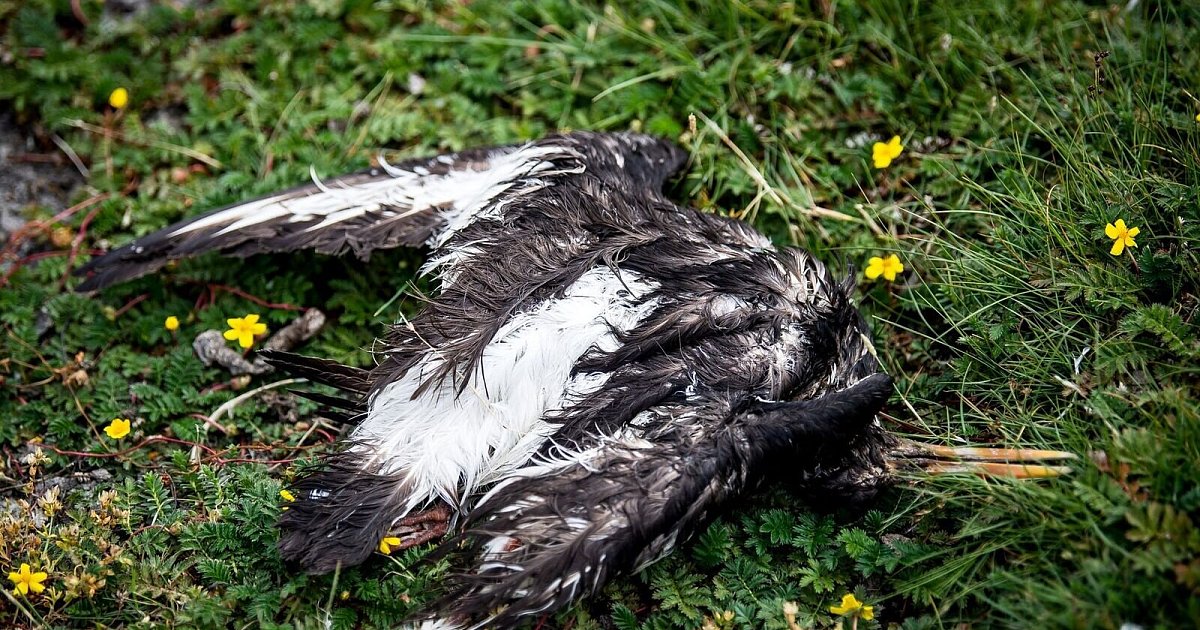Dead birds, abandoned nests, hungry little animals: This year, bird flu is leaving particularly grim pictures in its wake — and at an unusual time. The head of the national reference laboratory for avian influenza at the Friedrich Loeffler Institute (FLI) near Greifswald tells dpa that the infection process “has a completely new quality”.
Tim Harder assumes that tens of thousands of birds have fallen victim to the virus in the North Sea alone. A large summer wave caught colonies of seabirds. Terns are particularly affected in the North Sea, but are also affected by pelagic birds such as the gannet. In the Baltic it is found mainly cormorants, but also black-headed gulls.
There was a massive spread of infection not only in the German region from the North and Baltic Seas, but also in the British Isles and in Scandinavia to Iceland. As well as outside Europe. This virus also engulfed all of North America. One could speak of a real pandemic in wild birds, Harder says.
Avian influenza threatens entire species in Germany
According to Martin Römmler, bird protection consultant at Naturschutzbund Deutschland (Nabu), bird flu is threatening at least the population, if not the occurrence of entire species in Germany. “It certainly has potential.” The northern janet bird, which breeds in Germany only in Heligoland, is called. “This means that if the colony dies, the species will become extinct in Germany.” He points to estimates by the local Jordsand Bird Conservation Society, which say 70 to 80 percent of nests there have been prematurely abandoned this year.
Precise surveys are difficult. According to Rummler, mother animals often die on the way, for example when they are looking for food. You can only assess the consequences in the next year. “When you see how many adults have come back, how many are starting to breed again.”
According to Harder, Schleswig-Holstein and Lower Saxony were particularly affected in Germany in the summer. In Mecklenburg-Vorpommern there has been less evidence of recent times. Due to bird migration, outbreaks have occurred in the past, especially from October to April. In the summer of 2021, there were only isolated cases. An infection of the size of this summer was first observed.
Expert: ‘The virus is definitely no longer contained’
Can this epidemic be contained? The expert is pessimistic. Infected carcasses can be collected quickly to prevent further infection. But: “The virus certainly can no longer be contained in this way.” Hopefully, less-lethal forms of the virus will prevail in the future.
So far, however, there have been no signs of that. “In this respect, of course, such an epidemic will also end if no host is left susceptible.” This can be the case if there are not enough animals left or they have developed immunity. However, there is still no reliable information about this.
After all, according to Harder, the current virus is harmless to humans. He knows of only two infections in humans: one from England and one from the USA, both of which are not seriously ill. “But what should warn us is the number of cases in mammals with this particular virus.” Foxes, hens, otters, and most recently a black bear have all died. In close contact, there is also a risk of infection fatal to mammals. Therefore, ornithologists will have to protect themselves accordingly.
Concern about the human pandemic
In the past, there have also been deaths among humans – especially in Southeast Asia or Egypt. However, it was a different type of virus than the one that is currently prevalent. More than 2,000 people have been infected, of whom about 30 percent have died. Although human-to-human infections are very rare exceptions, there is significant concern that these pathogens can also cause epidemics in humans.
There are certainly similarities with the coronavirus here. The first precursor to the bird flu virus, which is still rampant today, was discovered in China in 1996 — in domestic poultry, Harder says. The way poultry is raised and traded in Asia, for example in live animal markets, has created niches and pathways for the spread of new influenza viruses.
Rommler advocated the abandonment of factory farming. Certainly large holdings should not be located near protected areas or known resting places for birds. Global monitoring of the infection process and the international exchange of information must also be improved. “Even at the EU level, it is not easy to get useful data.”
Vaccinations in Europe?
Hardy sees Europe at a turning point when it comes to bird flu. There have been so many outbreaks in the production of French ducks or Bulgarian geese “that you can no longer control them with the tried and tested method”.
That is why one would consider allowing vaccination in Europe as well – as it is possible in some Asian countries. High control and financial costs speak against this. In addition, the virus is pressured to change. German producers have already received inquiries about vaccinations. I think that will certainly be discussed more intensively in the coming months and years.
According to FLI figures (as of September 20), there were more than 1,300 confirmed cases of avian influenza in wild birds in Germany in 2021 as a whole. The epidemic last fall and winter was considered the most severe in Europe until then. This year, the number is close to 1,070, not including fall and winter, when the number of cases is usually the highest. FLI notes that wild birds are not accurately counted and that there can be many animals behind each case.
the left
The Mindener Tageblatt is not responsible for the content of external websites.

“Alcohol buff. Troublemaker. Introvert. Student. Social media lover. Web ninja. Bacon fan. Reader.”





More Stories
Huge radiation explosion from a magnetar – forschung.de
Principles and features of the folk nutritional principle
Science: The percentage of women in mint topics rises to a third